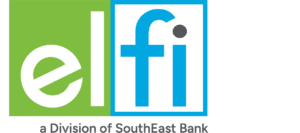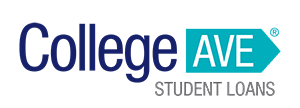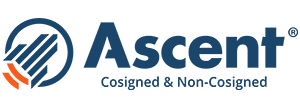Whether you’re a recent graduate or have been paying student loans for years, refinancing can be a great way to reshape your monthly budget and save money in the long run.
If you’re one of the people who have CommonBond private student loans, you may be looking to refinance to a better rate or repayment term. That’s the question we’re here to answer today: why and how to refinance CommonBond Student Loans.
Why you should consider refinancing CommonBond student loans
Founded in 2012, CommonBond began issuing student loans and refinanced student loans to people seeking higher education. From bachelor’s degrees to graduate work, including dental and medical degree programs, CommonBond has been a lender of choice for students and their parents. As such, they’ve been very successful and have funded over $4 billion in student loan debt since their inception.
CommonBond has been a popular choice for students due to their four types of repayment plans while in school, their generous forbearance choices, and their highly rated customer service. However, one of their requirements is that all undergraduate and graduate students have a cosigner when they apply for their private student loan.
When it comes to refinancing student loans, it can feel like a big decision. You want to make sure you are doing the right thing. So, let’s take a look at some of the pros and cons of refinancing your CommonBond student loans, as well as how the process works and what to expect.
Benefits of refinancing CommonBond student loans
Now that you’ve graduated, you may be looking to pay off your loans and are less interested in student-friendly repayment options, like the ones CommonBond offers. With a steady income and future plans that probably require more buying power, now is a great time to review what benefits you might get by refinancing your student loans.
One benefit — actually pay off student loan principal
One of the options that CommonBond offers includes four choices for monthly payments (the first three capitalize any remaining interest on the loan and then adds it to the remaining balance), including:
- Deferring payments until graduation,
- ‘Interest-only’ payments while in school,
- $25 monthly payments, or
- Full monthly payments while in school.
These choices may be great while you’re in school, but the first three don’t move the needle in terms of paying off the debt. In fact, if you took advantage of any of these choices during school, you may actually owe more on your CommonBond student loans now than you originally financed.
Releasing your cosigner from further obligation
When you obtained your student loan(s) from CommonBond, you were required to use a cosigner, usually a parent or grandparent.
That person has been co-responsible for your payments ever since. And even though you hopefully were able to keep up the payments, it still affected their credit report and buying power as if they took out the loan themselves.
CommonBond does allow you to drop a cosigner by qualifying and applying for a cosigner release. To do that, you have to be graduated and 21 years of age, plus have 24 consecutive months of full payments without any deferments or partial payments.
By refinancing, you can drop your cosigner immediately and take responsibility for the student loan debt yourself. This frees up your cosigner to use their increased financial buying power for other things they may want to concentrate on like travel or retirement.
Note: During the CARES Act (where federal loans and interest were suspended through the federal government – March 2020 through May 2022), some people used their 24 months of deferment to stop payments on CommonBond private loans. In these cases, the cosigner release requirements started counting when payments resumed.
Lower your interest rates
Interest rates on federal and private student loans tend to be significantly higher than on refinanced student loans. When you refinance your CommonBond student loans, you have a choice of these three benefits:
- Lower interest — interest rates have never been lower, and it’s not expected to last. Right now, rates for fixed rate loans (one steady rate throughout the life of the loan) and variable rate loans (adjusting loans where the rate is determined annually and can increase or decrease depending on the prevailing LIBOR rate) are at historic lows. Fixed rate loans are hovering around 2.4. to 5% and variable rate loans are around 1.7% to 5%. However, the Central Bank has announced that they will institute three rate increases in 2022 and three additional hikes are planned for 2023. That means the percentage of interest will likely start to climb as well costing you more money to borrow or refinance debt.
- Pay off loans more quickly — in addition to lower interest rates, when you refinance you can choose to shorten the terms of your loan. By choosing a shorter term (like 5- or 7-year terms instead of 10), you will pay off your loans more quickly and free up your capital for other important things.
- Reduce your monthly payment amount — you can also choose to extend your repayment terms and reduce your monthly payments. Many refinance lenders offer 15- and 20-year terms. One even offers 25 years. This can have a positive impact on your current monthly budget but may cost you more with added interest costs over time.
The 2 Best Companies to Refinance Student Loans
Our Top-Rated Picks for 2024 Offer Low Rates and No Fees

Drawbacks of refinancing CommonBond student loans
Like with any financial decision, there are pluses and minuses. It’s important to examine the impact of any drawbacks and what they might mean to your ability to manage your student loan debt now and in the future. Weighing that against the benefits is important when making a sound financial decision.
Refinancing your CommonBond student loans is no different. Here are a couple of things to consider:
Loss of CommonBond forbearance and deferment
When you refinance your CommonBond student loans, you will lose access to their very generous 24-month forbearance plan, as well as any deferment programs they offer.
Now your new refinance company will likely have a forbearance and deferment plan as well, but it may not be as generous as the one offered by CommonBond. In fact, most private lenders offer 12 months at most.
As the current government-mandated suspension on loan payments and 0% interest comes to a close, it’s easy to forget how helpful those programs can be when needed. It’s worth some consideration when weighing the benefits of a refinanced loan.
Loss of hybrid loan program savings benefits
If you participated in the CommonBond Hybrid Loan program where they offer student loans that have 5 years at a fixed rate followed by 5 years at a variable rate, you will lose any benefit cost wise. However, with today’s exceptionally low interest rates, the tradeoff may not matter, and you might, in fact, get an even better rate for a refinanced loan.
Loss of CommonBond networking events & CommonBridge program
Unique to CommonBond, they offer a community of networking events, entrepreneur panels, and career-building workshops. If you have taken advantage of these sessions, you won’t be able to once you choose a new lender.
Loss of participation in CommonBond’s Social Promise program
CommonBond has been a long-time supporter of Pencils of Promise. They have donated $1M+ and built over 470 schools in developing countries. Their social commitment is central to their organization.
Why refinancing private student loans to a lower rate is a good idea
The good news is that when you refinance your student loans from a private lender like CommonBond, you don’t lose government benefits like changing from a federal loan, so it’s simply changing lenders and saving money.
Ultimately, that boils down to the pure essence of finding the private lender that offers the best interest rates and terms for the student loan that works for your lifestyle. CommonBond student loan refinancing is likely to save money because CommonBond’s interest rates tend to be a bit higher than the competition.
That means that if you have a CommonBond student loan for $30,000 (about the average student loan debt for undergraduates in 2021) and you are currently paying 6.9% over a ten year period, you would be paying a monthly payment of $346.78 and total interest of over $11,600.
If you refinance the same $30,000 to a new interest rate of 2.6% for 10 years, your monthly payment would be reduced to $284.18, and you would only pay about $4,100 in interest over the life of the loan.
See How Much You Can Save
View Details
Collapse
Step 3: See How Much You Can Save
$15,310
Lifetime Interest
Savings
$1,018
New Monthly
Payment
$128
Monthly
Savings
| Current Loan | New Loan | Savings | |
|---|---|---|---|
| Rate | 6.7% | 4.2% | 2.5% |
| Lifetime Interest | $37,520 | $22,210 | $15,310 |
| Monthly Payment | $1,146 | $1,018 | $128 |
Like what you see? Check your actual prequalified rates from the industry’s top lenders in just 2 minutes or less.
When is the best time for CommonBond student loan refinancing?
Timing a successful refinance is the name of the game. It can seem like a complicated question, and it can impact your financial health and monthly budget for a long time. But really, it boils down to two main issues:
- When you are ready — that’s right, when you and your financial situation are in the right place, refinancing just makes good sense. The first questions a lender asks are ‘do they make enough to afford the loan’ and ‘can we trust they will repay the loan.’ You can demonstration this tangibly with the following:
- A strong income and earnings history — What can you afford? Whether you are self-employed or have a traditional job, your income and earnings history show lenders that you mean business and hold down a steady income. You can demonstrate that through paycheck stubs or, if self-employed, through previous years’ tax returns and Schedule C documents.
- Good credit history — Your credit score is key to landing a good interest rate and even getting qualified in the first place. Lenders review your credit score and history to determine if you are a strong credit risk. With most lenders, a credit score of 670 is the bare minimum to get refinanced. However, a score over 740-750 wins the really great interest rates.
- DTI or debt-to-income ratio — The next indicator of your financial health that all lenders take into consideration is your debt-to-income ratio or DTI. This ratio looks at your total monthly income and your total monthly payments to determine is you are solvent enough to absorb the debt payments and aren’t over-extended financially. Here is a quick calculator to help you determine your DTI.
- When the markets are ready — one can make the case that the refinancing market is as ready now as it may be for a while. At time of publishing, interest rates for refinancing are as low as 1.74% for variable rate loans.
Who should refinance CommonBond student loans?
Anyone with CommonBond loans who is feeling the pinch of student loan debt should consider refinancing their student loans. Of if you have multiple student loans, you can consolidate them into one easy monthly payment at a better rate than you may be paying with many loans.
As long as you meet the criteria that we’ve outlined above, you have a great chance of scoring a better interest rate and lower monthly payments.
And things change — not only can you lower your rates, but also improve your terms to better meet your current lifestyle which has probably changed since you originally took out your CommonBond loans.
At the very least, you can take advantage of Purefy’s Comparison Rate Tool to find out what you qualify for and how much interest you can expect to pay. Let’s look further at CommonBond student loan refinancing.
How to refinance CommonBond student loans: Step-by-step
Your first step is to find the best loan package that you can qualify for and that includes your interest rate (fixed or variable), number of years to pay back the loan, and any other specials or programs that might fit your needs.
Today, that comparison is quick and easy — and available in one place. No need to visit tons of different websites and fill out questionnaires everywhere.
Compare student loan refinance rates with Purefy
Purefy has helped people refinance over $2 billion in student loans with our proprietary Comparison Rate Tool. By answering a few simple questions that include some personal and income information along with your degree and what school you graduated from, you can get pre-qualified quotes from various top-tier private lenders offering the best rates available.
And the best part — it’s free, secure, and encrypted, and there’s no impact to your credit report until you directly apply for a loan. There’s no cost to get a quote and you receive real, pre-approved interest rates, not teaser quotes that increase if you actually apply for a loan.
Here’s how it works:
1. Fill in some basic information in 2 mins
You’ll want to gather some basic information such as:
- the type of loans you’re refinancing (your loans vs Parent PLUS loans),
- where you went to school,
- your highest degree and graduation date,
- your annual income and total assets,
- whether you rent or own your home,
- the total amount of loans you want to refinance,
- your demographic info – address, etc., and
- your date of birth, citizenship, and SSN (all handled securely).
With that information, Purefy can give you quotes from top lenders in 2 minutes, and you can take as long as you like to compare and review the information before making a choice.
There’s no fee for these services and no obligation; you decide with whom and when you want to do business and then move forward.
2. Select your favorite prequalified rate
Now, that you have the information, what do you look for?
When you receive your quote, you will have the information needed to select the best option for your financial health. There will be an interest rate quote (fixed and variable-whichever is offered) and terms for you to choose from, as well as any special information you need to know about the offer or lender.
For example, at some private lenders you may be required to open a checking account or join a credit union (at no cost to you). Also, lenders may have special programs like spouse refinancing where you can combine you and your spouses’ student loans into one package.
If all this seems confusing or you have questions, Purefy also offers a team of student loan experts that are available to meet with you. These people really understand refinancing and can guide you through how the process works and where you can find benefit. And, like everything about this process, there is no cost or obligation.
3. Once you make a selection – complete your refinance application with your new lender of choice
Determining your choice of lender lets you focus on obtaining a new loan. Your first step will be to complete an application and submit any documents that are required by your new potential lender.
This may include:
- paystubs or a W-2
- tax returns
- a government-issued ID, like a driver’s license or passport
- current loan documents
- proof of your degree
These documents can all be submitted electronically through encrypted sites to keep your information safe and secure.
At Purefy, their pre-vetted private lenders do not charge application or origination fees and none of them have pre-penalty fees if you choose to pay off your loan early or refinance again at a later date.
As part of the approval process once you submit your application, lenders run an official credit report which will impact your credit score. Any impact is usually only temporary, and a new loan can actually sometimes improve your credit score down the road.
How is that possible? With a better interest rate, you pay less per month. That impacts your total credit usage which will decrease and could pop your score up a couple of points. Nothing wrong with that!
4. E-sign and close your loan
Once you have been approved by a new lender, the process is relatively simple.
You will have an opportunity to review the loan documents and then will be asked to e-sign the loan package. Once that is done, your new lender will issue a payout to your previous lender(s) for any amounts due.
You will then receive your loan documents and a new due date for your payments.
It’s advisable to continue making payments to your previous lenders until you receive official notification that your loans have been paid off. You don’t want to risk damaging your credit by missing a payment.

Free eBook: How to Conquer Student Loans
Free eBook: How to Conquer Student Loans

Refinance your CommonBond student loans today
Let’s take a last look before you get started.
Student loan refinance rates are super low right now – so if you have private CommonBond student loans, you can save money with essentially no drawbacks.
First, take a minute to try Purefy’s Student Loan Refinance Calculator to see how much money you might be able to save. It will show your monthly as well as lifetime savings potential in a fast, easy-to-use calculator.
Next, take the time to review your current financial landscape and collect all the information that you need including your income information, your current loan(s) information, credit score and credit report, and your total bills (to help determine your DTI).
Armed with that information, you can use the Purefy Comparison Rate Tool to find the best quotes available to you. From there, you have the freedom to decide the opportunity that makes the most sense and to apply for CommonBond student loan refinancing.



















